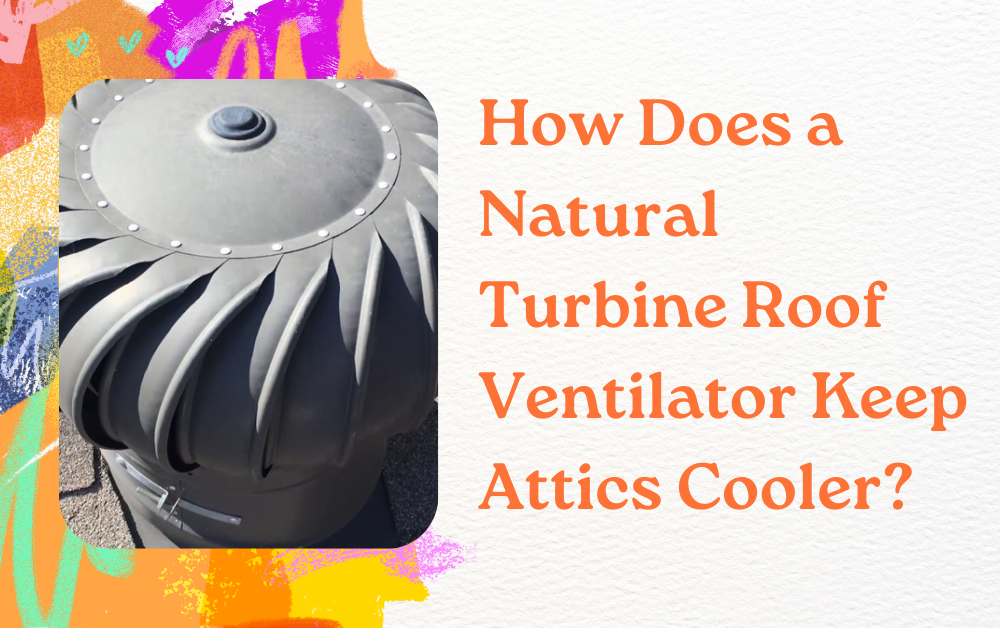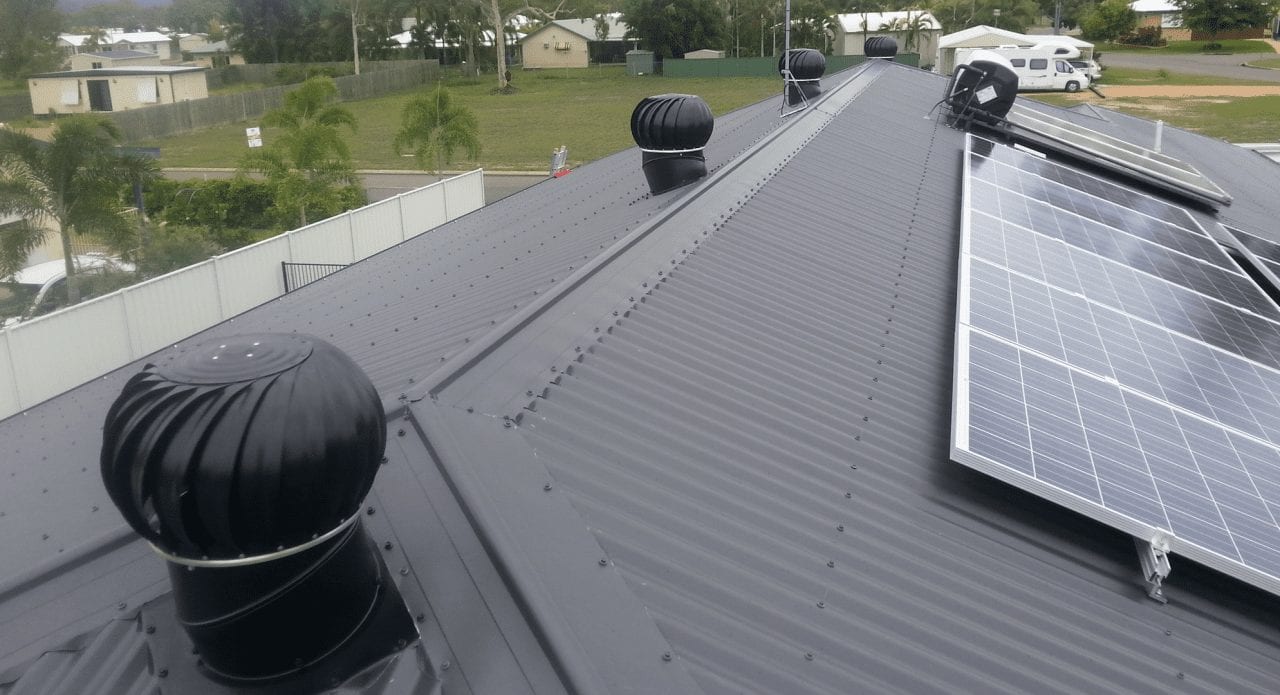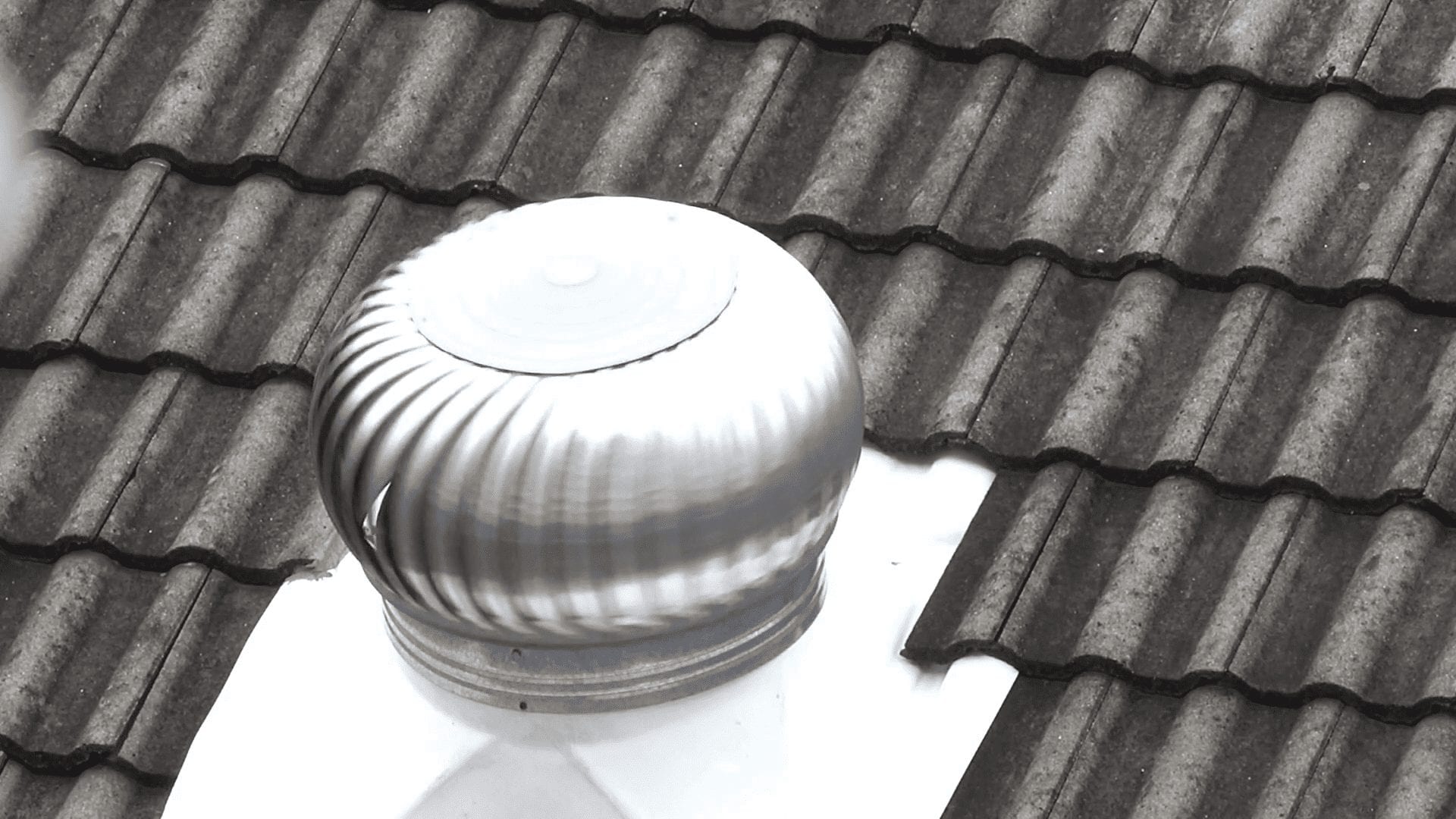Attic temperatures have a significant impact on the overall comfort and energy efficiency of a building. Excess heat trapped in attics can lead to higher cooling costs, reduce the lifespan of roofing materials, and make living spaces uncomfortable. One effective solution for mitigating attic heat is the installation of a natural turbine roof ventilator. This article explores how these devices work, their benefits, and why they are a sustainable choice for modern buildings.
Understanding Natural Turbine Roof Ventilators
A natural turbine roof ventilator is a mechanical device designed to improve ventilation in attics and other roof spaces. Unlike electrically powered fans, these ventilators rely on wind and thermal currents to create airflow. The device typically consists of a cylindrical housing mounted on the roof, with a rotating turbine on top. The rotation of the turbine draws hot air out of the attic, promoting continuous air circulation.
Key Components of a Turbine Roof Ventilator
The primary elements of a natural turbine roof ventilator include:
- Rotating Turbine: A lightweight, aerodynamically designed rotor that spins with wind or thermal currents.
- Base Housing: Connects the turbine to the roof, allowing air to exit the attic while preventing water infiltration.
- Bearings and Shaft: Ensure smooth rotation of the turbine under varying wind conditions.
- Roof Flashing: Provides a waterproof seal where the ventilator meets the roof surface.
These components work together to maintain a stable airflow, even when wind speeds are low.
NOTE:- Natural Turbine Roof Ventilator was applied to commercial and residential buildings, promoting effective heat dissipation. Businesses and homeowners noticed immediate improvements in indoor comfort and energy savings. Presto Electromechanics Company LLC delivered timely installation services. Contact us now to enhance your property with superior ventilation solutions.
How Natural Turbine Ventilators Work
The operation of a natural turbine roof ventilator is based on the principle of passive ventilation. Hot air rises naturally due to its lower density compared to cooler air. As the air in the attic heats up, it rises toward the roof. The turbine, spinning in response to wind or thermal differences, creates a vacuum that draws this hot air out of the attic.
This process is entirely energy-independent, meaning no electricity is required to operate the ventilator. It relies solely on environmental factors such as wind and temperature gradients.
Wind-Induced Rotation
Wind passing over the turbine blades causes them to spin. As the blades rotate, a low-pressure zone forms inside the ventilator, pulling hot air from the attic upward and out of the roof. This continuous airflow ensures that fresh, cooler air can enter the attic through vents located at the eaves or soffits.
Thermal Ventilation
Even on calm days, thermal currents play a significant role. Heat from the sun warms the air inside the attic. As this air rises, it escapes through the turbine, allowing cooler outside air to replace it. This passive movement of air reduces heat buildup and keeps the attic temperature more stable.
Impact on Attic Temperature and Indoor Comfort
By effectively removing hot air, natural turbine ventilators can significantly reduce attic temperatures. Studies and field tests have shown that well-ventilated attics can be 20–40°F cooler than unventilated spaces during peak summer conditions. Lower attic temperatures contribute to:
- Reduced Cooling Costs: Air conditioning systems work less to maintain indoor comfort, lowering energy bills.
- Prolonged Roof Life: Excessive heat can accelerate the deterioration of roofing materials such as shingles and underlayment. Ventilation prevents premature aging.
- Enhanced Indoor Comfort: Cooler attics reduce the transfer of heat to living spaces, creating a more comfortable environment for occupants.
Benefits Beyond Cooling
While the primary function of a natural turbine roof ventilator is to keep attics cooler, the device offers several additional advantages:
Energy Efficiency
Since natural turbine ventilators do not require electricity, they provide a sustainable and cost-effective method of ventilation. By reducing reliance on powered attic fans, homeowners can lower their carbon footprint.
Moisture Control
Attics are susceptible to moisture buildup, which can lead to mold growth, wood rot, and structural damage. Proper ventilation removes humid air and promotes the circulation of dry air, protecting the integrity of the building.
Noise-Free Operation
Unlike electric fans, turbine ventilators operate silently. Their rotation is smooth, and because there are no motors, they do not produce operational noise, making them ideal for residential areas.
Durability and Low Maintenance
High-quality turbines are typically made of corrosion-resistant metals such as aluminum or stainless steel. Their simple mechanical design requires minimal maintenance, and when installed correctly, they can last for decades with little attention.
Installation Considerations
Proper installation is critical to the efficiency and longevity of a natural turbine roof ventilator. Factors to consider include:
- Roof Placement: The ventilator should be positioned at the highest point of the roof to allow maximum hot air extraction.
- Roof Pitch and Size: The slope and total area of the roof influence airflow patterns. Larger attics may require multiple ventilators for optimal performance.
- Weatherproofing: Flashing and seals must prevent rainwater from entering the attic, as water intrusion can negate the benefits of ventilation.
- Number of Ventilators: The ideal number of turbines depends on attic volume, climate, and local building codes.
Comparing Natural Turbine Ventilators to Other Ventilation Methods
There are several alternatives to turbine ventilators, including ridge vents, gable vents, and powered attic fans. Each has its pros and cons:
Ridge and Soffit Vents
These vents provide continuous passive airflow but rely heavily on wind and temperature differences. While effective, they may not achieve the same level of heat reduction as a spinning turbine in certain climates.
Powered Attic Fans
Electric fans can actively remove hot air and are effective even in calm conditions. However, they consume electricity, require maintenance, and may generate noise.
Turbine Ventilators
Natural turbine ventilators combine the advantages of passive and active ventilation by using wind and thermal currents. They are energy-efficient, durable, and capable of lowering attic temperatures significantly without ongoing operational costs.
Environmental and Economic Benefits
By improving attic ventilation, natural turbine ventilators help conserve energy and reduce environmental impact. Key benefits include:
- Lower Energy Consumption: Reduced demand for air conditioning translates to less electricity usage and lower utility bills.
- Sustainable Solution: Operating without electricity, these ventilators use renewable environmental energy sources.
- Increased Property Value: Efficient ventilation contributes to overall building health and energy efficiency, potentially increasing property appeal.
Common Misconceptions
Some homeowners hesitate to install turbine ventilators due to misconceptions:
- “They work only when it’s windy”: Turbines also rely on thermal currents, so they provide ventilation even on calm days.
- “They require frequent maintenance”: High-quality turbines with sealed bearings need little attention beyond occasional inspection.
- “They leak water”: Proper installation with adequate flashing prevents water intrusion.
Understanding these facts helps property owners make informed decisions.
Conclusion
Natural turbine roof ventilators are an effective and sustainable solution for keeping attics cooler. By leveraging wind and thermal currents, they passively remove hot air, reducing cooling costs, protecting roofing materials, and enhancing indoor comfort. Their energy efficiency, durability, and minimal maintenance requirements make them an attractive choice for residential and commercial buildings alike.
For homeowners seeking a low-cost, environmentally friendly way to manage attic temperatures, installing a natural turbine roof ventilator is a practical and long-term investment. Not only do these ventilators improve comfort, but they also contribute to energy conservation and the overall health of the building.
For more insightful articles related to this topic, feel free to visit – interiordesigningtrend



